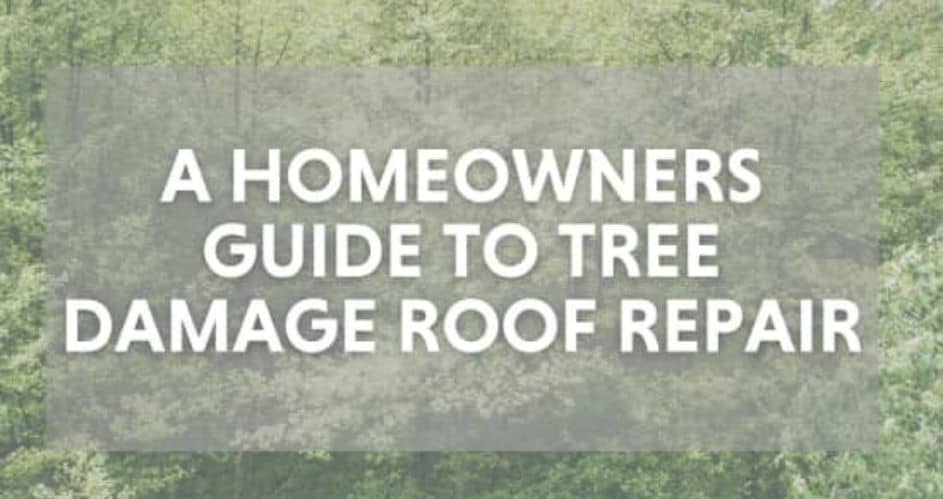
If you live in a home surrounded by trees, then chances are you’ve seen your fair share of stormy weather and fallen tree limbs. As a homeowner, it can be an overwhelming experience when one of the large branches comes into contact with your roof or property.
Not only does this cause costly damage to your roof and siding – but it also leaves you feeling emotionally drained and unsure of where to begin with the repair job.
To help ease some of the burdens, we’ve compiled all the information you need to know about the danger of falling trees on the roof and roof repair.
Keep reading here for tips on how to quickly assess any exterior damages caused by falling trees or branches, as well as other money-saving approaches that will have your home looking good again.
How Trees Can Cause Damage To Your Roof
Hanging Branches
The evergreen branches of nearby trees might look like a harmless addition to your beautiful landscape, but they could be wreaking havoc on your roof. Overgrown branches, if left unchecked, can easily reach too close to your home and cause damage over time.
These pesky intruders have the capability of scratching shingles as they sway in the wind and their leaves and cones can block gutters and downspouts which may force water to seep under shingles and into your roof structure.
Furthermore, when the weather gets rough, wind storms can break these branches causing more direct damage – especially if heavy branches land directly on the roof.
Even if the limbs don’t hit any spot specifically, debris from the breaking tree part could cause minor cosmetic damage that is costly for repairs.
Moss Growth
During the long, humid days of summer, it’s common to spot a splash of green on your roof. But those mossy patches aren’t just unsightly – they can cause real damage to your roof that might go undetected for years.
This is because the moss infiltrates and traps moisture under shingles, which causes them to correspondingly expand and warp, reducing their effectiveness as a water barrier.
Moss also encourages organic growth in its damp environment, creating further pathways for damaging moisture to find its way into your roof structure.
Falling Leaves And Needles
Strong autumn gusts can rustle through your neighborhood, buffeting trees and sending their leaves and needles down to the ground – and often onto your roof.
Over time, this debris can cause issues with your roof’s drainage system or even give pests an entryway onto your roof, leading to costly repairs.
Additionally, if left unaddressed for long, the decomposing leaves and needles may trap dampness against your roof and result in decay or other issues that affect its integrity.
Falling Trees
When battered by strong winds or heavy downpours, these seemingly immovable objects can easily fall onto your roof and cause tremendous amounts of damage.
In an attempted bid for survival, their sharp branches are often left clinging onto the corners of roofs, which can prove difficult to remove without a proper rooftop inspection and assessment.
In the most extreme cases, entire trees may collapse onto your roof, causing debris to be dispersed, tiles to be broken, and more.
As such it is wise to inspect your property regularly to ensure that your roof remains in good condition no matter how many mighty storms pass through.
How To Handle A Tree Damage Situation On Your Roof
Take Pictures
Your first step should be to take pictures of the tree, as well as any damaged sections of your roof.
Capturing this visual evidence is incredibly helpful when it comes to making insurance claims or when contacting local workmen for advice and quotes to repair the damage.
Examine The Damage
Before attempting any repairs, however, it is essential to assess the extent of damage and understand how best to approach the situation.
Taking a keen look at the type of tree damage on the roof; whether there are shingles missing or broken branches scattered across its surface, can give one an idea of what repairs will be necessary in order to restore it to its pre-damage state.
Call Your Insurance
The best way to obtain help to resolve the damage is to immediately call your insurance provider.
Notifying them of the situation allows for quick proactive action, taking steps to protect your roof from further damage and beginning the claims process for roof repairs or replacements, depending on what the damage requires.
Call A Professional For Repair
Although you may be tempted to handle the repairs yourself, it’s best to call an experienced professional for help. An expert will have knowledge of the best materials and techniques to use as well as the skills needed for quick and efficient repair work.
Plus, they will be able to provide valuable advice on dealing with insurance companies and avoiding future issues from weak or damaged structural components. Don’t patch up your problems: enlist an expert tree damage repair specialist for quality results.
As any experienced roofer will tell you, there is no one-size-fits-all approach to roof repair due to tree damage. Each situation is unique, and a homeowner should be prepared to seek the expertise of a professional when tackling these complex repairs.